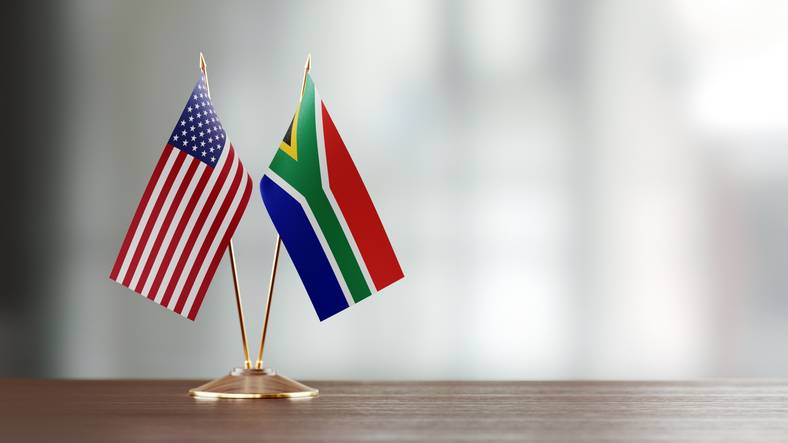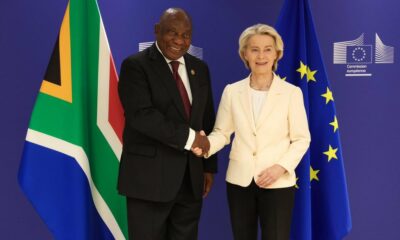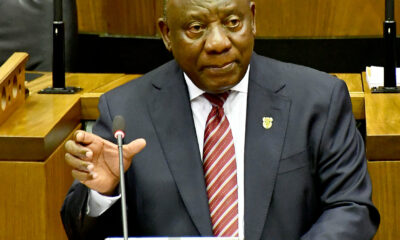News
Why South Africa and the United States Can’t Afford to Lose Each Other

A Trade Friendship That Runs Deep
When people talk about South Africa’s global connections, China usually grabs the spotlight as our biggest trading partner. But just behind it, often overlooked, sits the United States. It is not just South Africa’s second-largest bilateral trade partner; it is a country that has helped shape our economy through decades of exchange, opportunity, and occasional tension.
Between 2020 and 2024, the value of goods traded between the two countries reached R1.3 trillion. That’s not just a statistic on paper. It reflects jobs, industries, and families whose livelihoods depend on this relationship.
What South Africa Sells to the US
South African exports to America tell a story about who we are as a nation. Over R800 billion worth of products made the journey across the Atlantic in that four-year period. The stars of the show are our natural treasures: gold, platinum, diamonds, and other precious stones, valued at R361 billion.
But it is not only about the riches under our soil. Vehicles worth R96.4 billion found American buyers too, proving South Africa’s automotive sector can compete with the best. Add to this our agriculture (citrus fruit, wine, and speciality food products), and you see a snapshot of an economy that is more diverse than many give it credit for.
What the US Sends in Return
The United States exported around R496 billion in goods to South Africa over the same period. The imports matter: machinery, aircraft components, medical equipment, chemicals, and refined petroleum. These are the tools that keep hospitals running, construction projects moving, and industries ticking.
Thanks to trade agreements, about 77 percent of US goods enter South Africa duty-free. That lowers costs for businesses and, ultimately, for consumers.
South Africa Holds the Advantage
For now, South Africa enjoys a clear edge in this trade friendship. Our country recorded a R331 billion surplus from 2020 to 2024. The surplus reflects strong demand for what we produce, along with policies like the African Growth and Opportunity Act (AGOA) that give us duty-free access to American markets on more than 6 800 product lines.
AGOA is more than a policy document. For many South African farmers, winemakers, and manufacturers, it has meant breaking into the US market and competing globally on fairer terms. The result is not only export growth but also local jobs and stronger communities.
Clouds on the Horizon
Of course, the partnership is not without challenges. The US has occasionally imposed tariffs on South African goods such as steel, aluminum, or agricultural exports. These make our products more expensive abroad, cutting into profits and hurting competitiveness.
Tariffs also risk raising prices for American consumers, who may end up paying more for imports. Yet trade talks and diplomatic engagement usually help to smooth these tensions before they spiral.
More Than Just Numbers
Beyond goods and services, this relationship is about people and ideas. South African firms have partnered with US companies to adopt new technologies, improve farming methods, and build advanced automotive production. In healthcare, American businesses have brought in equipment and training that strengthen local hospitals.
This flow of expertise is as valuable as the trade surplus. It builds skills, supports communities, and ensures that the partnership has roots deeper than profits.
The Road Ahead
The future of South Africa–US trade looks promising. Both nations are investing in new sectors like renewable energy and digital services, areas where collaboration could pay off for decades to come.
For South Africans, this partnership means access to advanced medical equipment, heavy machinery, and new technologies. For Americans, it means reliable access to high-value exports like gemstones, cars, and citrus. For both sides, it means jobs, innovation, and a reminder that economic ties can help weather political storms.
So the next time you sip a glass of Cape wine or see an imported American engine powering a local project, remember the bigger picture. The United States and South Africa need each other not just for trade balances, but for progress, resilience, and the shared hope of prosperity.
Also read: Ramaphosa Calls on Civil Foundations to Return to National Dialogue
Follow Joburg ETC on Facebook, Twitter, TikT
For more News in Johannesburg, visit joburgetc.com
Source: SABC News
Featured Image: The Mail & Guardian



























